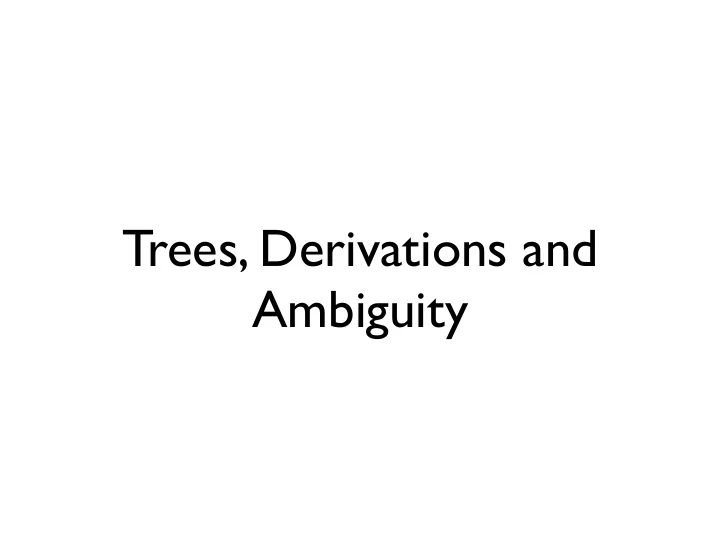

Trees, Derivations and Ambiguity
A grammar A tree 3 derivations correspond to same tree (same rules being used in the same places, just written in different orders in the linear derivation) 1) E => P+E => a+E => a+P => a+a 2) E => P+E => P+P => a+P => a+a 3) E => P+E => P+P => P+a => a+a But only one leftmost derivation corresponds to it (and vice versa). (see HW#7 for more)
Another grammar for the same language: E → E+E | E*E | (E) | a This grammar is ambiguous: there is a string in L(G) with two different parse trees, or, equivalently, with 2 different leftmost derivations. Note the pragmatic difference: in general, (a+a)*a != a+(a*a); which is right?
The “E, P” grammar again This grammar is un ambiguous. (Why? Very informally, the 3 E rules generate P((‘+’ ∪ ’*’)P) * and only via a parse tree that “hangs to the right”, as shown.) But it has another undesirable feature: Parse tree structure does not reflect the usual precedence of * over +. E.g., tree at lower right suggests “a * a + a == a * (a + a)”
A more complex grammar, again the same language. This one is unambiguous and its parse trees reflect usual precedence/associativity of plus and times.
Can we always tweak the grammar to make it unambiguous? No! This language is a CFL; see grammar at left. Easy to see this G is ambiguous. Hard to prove, but true, that every G for this L is also ambiguous. Hopefully this is fairly intuitive–strings of the form a n b n c n can come from the i=j or j=k path G is ambiguous L is inherently ambiguous , meaning every G for L is ambiguous
Some closure results for CFLs
Recommend
More recommend